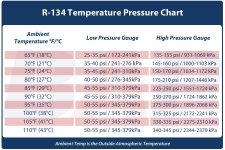Agree with JPNinPA . Not being a refrigerant guy either but have successfully done some a/c systems myself , significant oil loss occurs with breaks or major leaks . Schrader valves are notorious due to handling when using gauges since the tiny springs lose tension after several times or more of pressing and releasing . The dial down type connectors used on professional evacuation equipment are usually the culprit when over zealous techs crank down too much and bend the pins or just over stress the valves themselves. But even so , the Schrader valves may need replacement if the leaks persist . There are core tools available for this purpose that change the Schrader valve cores without losing the charge but like everything , at a cost. Most leaks I've ever seen were at the valve cores and especially at the compressor seals . While changing a compressor seal set isn't a tough job providing the compressor isn't buried and not easily accessible , the system would need to be discharged . We know we have to be responsible and not release refrigerant into the atmosphere so that means a trip to the a/c guy to recover the freon . For now , I'm sure you'll be happy with topping off the system to keep cool . Would like to add however that too much freon or too much oil will be detrimental since both will contribute to causing " flooding " the evaporator core and not allow proper expansion of the freon in the evaporator hence inadequate cooling. The correct amount of oil needed in the system is vital as you no doubt are concerned for the compressors sake and the right amount of freon for proper cooling and carrying the oil through the system under the right pressure for proper lubrication of the compressor . Although it's been said the a/c sealer sold at Napa is superior , I like proper fixes and not band aid fixes . I don't advocate putting magic potions into a/c systems since there's always the possibility of the sealer congealing into an accumulator or dryer and causing a block in the system . That's not desirable. Us diyer's are at a disadvantage without an evacuation unit ( $$ ) but if we're willing to do some dissambly ( after the season ) , we can replace o-rings and seals ourselves if the fix becomes apparent . Since the Schrader valve cores are now tight , I think the best thing is to clean away any dirty connections where seals and o - rings live to see if any signs of leaks appear . This helps clue us in . Electronics leak detectors are expensive and cheaper one like harbor freight are a gamble since good quality detectors are specific to different grade freons ( r12 , r 134a , r410 and other substitutes ) so dyes are our best bet . All things being equal , I'd rather just repair what seals or o-rings are leaking , flush the system and chase with compressed air , replace a drier or accumulator , fill the compressor with the specified amount of oil for the vehicles system and bolt it on and manually turn the compressor to pump out the oil into the condenser to avoid hydro-locking the compressor , vacuum the system ( a vacuum is a good tool for a diy'er to have if you'll use one more than once ) and recharge . All I've just posted in terms of repair is of course extreme but that's only if you've got to tear down the system. For now , top off , enjoy cool air and monitor any leaks . Hopefully none anymore. As far as adding oil , like injecting or freon cans with oil , I personally don't think your system would lose very much oil but if the connections ever appeared gummy to a significant degree , especially around the compressor , I'd pay attention to any groaning from the compressor . If so , I wouldn't want to add more than an ounce or maybe even less . That's hard to do without an injector to measure . Don't want you to over oil . Squeezing off freon or adding to monitor evaporator temp readings until just right are easy , removing too much oil isn't . Driers and accumulators get saturated easily. Hence , I like to flush systems and start fresh . Didn't mean to over complicate but thought the knowledge I've learned may be helpful to all viewers to dispel the " black magic " of the a/c system and help prevent diy'er mistakes that so commonly occur . The parts stores love selling the recharge kits but if we don't use them correctly , we do more harm than good. A gauge set is a good investment as is a vacuum but only if one does this frequently . A good thermometer in the vent is all most of us need . Evaporator temp is what we're after . Too little freon or too much produce warmer temps . The right amount gets good results . Time consuming but doable .

